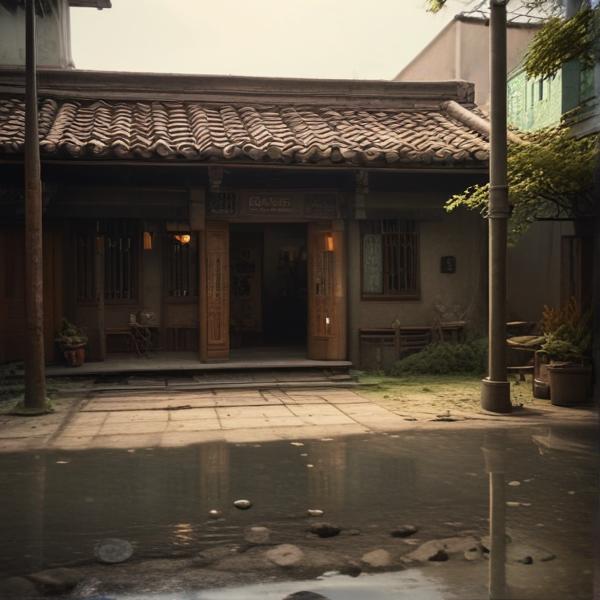基本信息 (Basic Information)
含义与用法 (Meanings & Usage)
中文核心释义 (Core Chinese Meaning): 经历,经过,日子,年、月的计算;常用于“历史”“经历”“日历”等词。
英文核心释义 (Core English Meaning): to pass through, to experience, calendar, a record of time; often seen in 'history', 'experience', 'calendar'.
象形意义 / 为何这么写 (Pictographic Meaning / Writing Rationale)
文言文释义 (Classical Chinese Meaning)
深入学习 (In-depth Study)
字源故事 (Origin Story)
字形演变 (Character Evolution)
常用词语和例句 (Common Words & Examples)
历史 (history)
中国有着悠久的历史。
Eng: China has a long history.
经历 (experience, to go through)
他经历了很多困难。
Eng: He went through many difficulties.
日历 (calendar)
请把日期写在日历上。
Eng: Please write the date on the calendar.
相关成语 (Related Idioms)
历经沧桑
Meaning: having gone through many changes or hardships
多语言翻译 (核心释义) (Translations (Core Meaning))
- French: passer par, expérience, calendrier, histoire
- German: durchmachen, erleben, Kalender, Geschichte
- Spanish: experimentar, pasar por, calendario, historia
- Italian: attraversare, esperienza, calendario, storia
- Portuguese: passar por, experiência, calendário, história
- Russian: проходить через, опыт, календарь, история
- Arabic: يَمُرّ بـ، خبرة، تقويم، تاريخ
- Persian: گذشتن از، تجربه، تقویم، تاریخ
- Dutch: doormaken, ervaring, kalender, geschiedenis
- Polish: przechodzić przez, doświadczenie, kalendarz, historia
- Vietnamese: trải qua, kinh nghiệm, lịch, lịch sử
- Ukrainian: переживати, досвід, календар, історія
视频学习资源 (Video Learning Resources)
通过以下链接在热门视频网站搜索 "历" 的更多讲解:
Search for more explanations of "历" on popular video sites:
- 在 Bilibili.com 搜索 "历 字源 说文解字" (Search on Bilibili)
- 在 YouTube.com 搜索 "历 character origin etymology" (Search on YouTube)
网络参考 (Web References for "历") ()
网络内容摘要 (Web Content Summary):
```html历(拼音:lì)主要含义为“经历、经过”,也有“历法”(calendar)的意思。 历 (pinyin: lì) primarily means "to experience" or "to pass through". It can also refer to "calendar" (lìfǎ).
字形起源上,“历”的甲骨文为“秝”,形象地表现谷物成双排列,原意指谷物成熟、从生长到收获的过程,引申为时间或事件的经历。 The original form in oracle bone script is “秝”, which depicts grains growing in pairs, symbolizing the process of maturing over time—thus extending to meanings related to experience and the passage of time.
- 常用词: 历史(history), 经历(experience), 日历(calendar), 阅历(life experience) Common words: 历史 (history), 经历 (experience), 日历 (calendar), 阅历 (life experience)
- 易混淆点:“历”与“厉”(lì, 严厉的厉)容易混淆,注意区分用法和含义。 Easily confused: “历” is often confused with “厉” (lì, meaning “strict”); make sure to distinguish their usage and meanings.
- 成语/搭配:历经沧桑(go through many changes),历历在目(clearly visible in one's mind) Common phrases/idioms: 历经沧桑 (experience many vicissitudes), 历历在目 (still vivid in one's mind)
这个字在古文中还有异体字“歷”,现代简化为“历”。 In classical Chinese, the traditional form is “歷”; "历" is the simplified version used today.
```历的解释|历的意思|汉典"历"字的基本解释 - 漢典
"历"字的解释,释义,异体字,音韵方言,部首笔画,康熙字典,说文解字,字源字形
汉字"历"的起源、演变过程-汉字字源辞典
汉字字源辞典收录3519条汉字词条,基本涵盖了常见汉字的字源解析,是汉字研究的必备工具。 ... 小篆历; 小篆歷 "历"字在古文字中也是个系列字。其字根是"秝" (读lì) ,甲骨文写作 ...
更多图片 (历 More Images) ()
